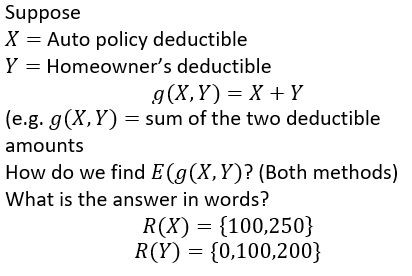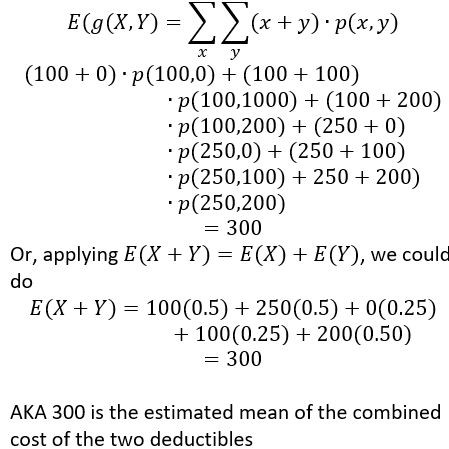-
If three cards are drawn in succession, how do we symbolize the events for drawing, from a regular deck of 52 playing cards, three specific cards in succession: A, B, and C? What formula would we use to determine the probability?

-
We draw three cards in succession from a regular deck of 52 playing cards. What is the probability that:• The first card is a red ace, AND• The second card is a 10 or a Jack, AND• The third card is greater than 3 but less than 7?

-
In a poker hand consisting of 5 cards, find the probability of holding 3 aces
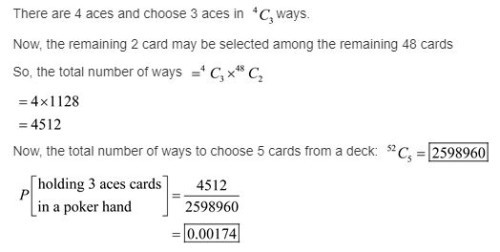
-
In a poker hand consisting of 5 cards, find the probability of holding 4 hearts and 1 club
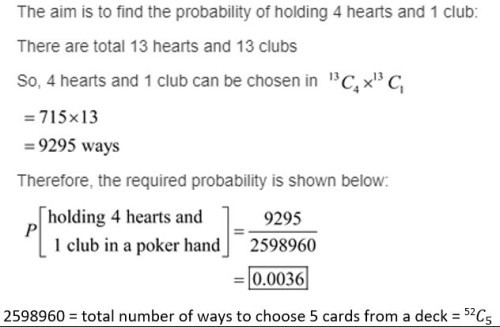
-
Setany collection of objects
-
Union of A and BThe set of all elements in A or B or both
-
Intersection of A and BThe set of all elements in BOTH A and B
-
Complement of Aall values NOT in A
-
EventAny subset of outcomes contained in the sample space S
-
Single Eventa single outcome
-
Compound eventmultiple outcomes
-
Permutationan ordered subset
-
CombinationAn unordered subset
-
Cardinality of set |A|Number of elements contained in A
-
Prime numberany whole number greater than one divisible only by one and itself
-
Interquartile RangeRange between Q1 and Q3
-
How to determine mild and major outliersMild: IQR*1.5Major: IQR*3.0
-
Random Variable (RV)

-
When is a random variable X discrete?If the set of possible values is finite OR countable
-
When is a random variable X continuousIf the set of possible values of X is uncountable and X possesses a density function.
-
Two examples of continuous random variablesReal numbersAll the numbers in any interval
-
When are you not to use the function f(x) in probability?In the case of a discrete random variable
-
Continuous Random Variable
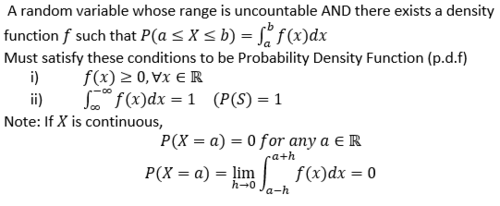
-
Which of the following is a measure of probability? f(x) or p(x) What is the other?p(x), the probability mass functionf(x) is a measure of frequency
-
What does F(3)-F(2) mean in wordsThe area under the distribution of probability between 3 and 2
-
How, in formula and words, does f(x) relate to F(x)

-
From a group of 5 women and 7 men, how many different committees consisting of 2 women and 3 men can be formed?

-
Suppose 5 components are installed in a series, and if any one of the components fails, the system is failed. How do we express this in terms of probability formulas?
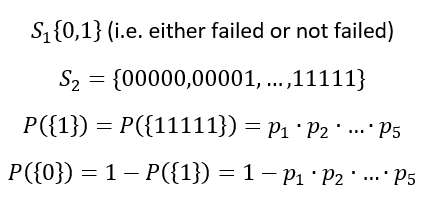
-
Under what circumstances can A be a subset of B?If every element in A is also in B
-
Under what circumstances are A and B considered to be equal?If both A and B contain the same elements
-
If any operation can be performed in n_1 ways, and for each of these a second operation can be performed in n_2 ways, and for each of the first two a third operation can be performed and so on, up to a sequence of k operations, how many ways can the sequence of operations be performed?

-
Probability of an Event A, based on all sample points

-
If a probability can result in any of N different equally likely outcomes, and if exactly n of these outcomes correspond to event A, what is the probability of event A?

-
Additive rules for three events, A, B, and C
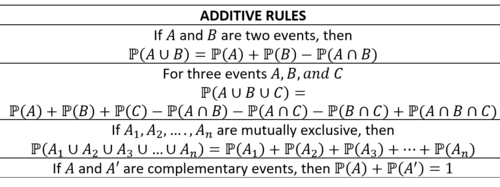
-
Subadditivity

-
Rule of Complements

-
Probability of an empty set

-
Property of Equally-Likely Outcomes
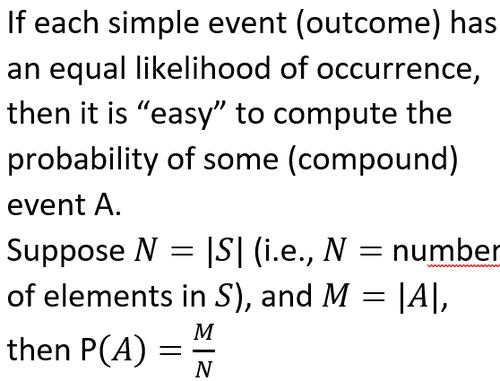
-
Conditional Probability/Independence/Product Rule

-
Suppose A and B are events in S. What are the conditions for the two events being independent?
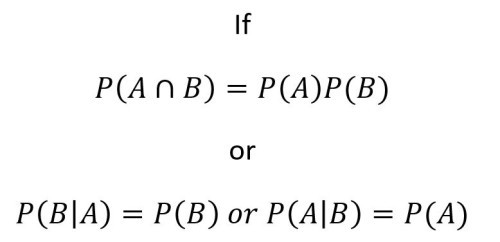
-
x is an element of A

-
Not A/ the set of elements of S not in A

-
A is a subset of B

-
Cardinality of set A

-
Union of Two Sets A and B

-
Intersection of Two Sets A and

-
Sets of elements in A and not in B

-
A and B are disjoint or mutually exclusive

-
Integers are a subset of all real numbers

-
Natural Numbers are a subset of all integers

-
Cartesian products of A and B

-
Empty Set

-
Number of combinations of size r that can be formed from n objects in a set

-
Number of permutations of size r that can be formed from n objects in a set

-
Union from A1 to A3

-
Probability of A given BP(A|B)
-
Is A={1,2,3,4,5,6} finitely countable, infinitely countable, or Uncountable?Finitely countable?
-
Are all natural numbers finitely countable, infinitely countable, or uncountable?Infinitely countable
-
If it is found that 210 out of 500 students smoke, what is the probability that a student in the sample smokes?210/500 = 42%
-
Suppose that we know that 42% of students in a sample smoke, 51.6% of students drink, and 24.4% of students smoke and drink. What is the probability of a student randomly selected from the sample smoking but NOT drinking (P(m∩d'))

-
IF P(m)=42% P(e)=43.2% P(e∩m)=19.4% What is the probability of P(e∪m)?P(m∪e)=P(m)+P(e)-P(m∩e)=42+43.2-19.4=65.8%
-
If: Probability component survives for more than 6000 hours is 0.42 Probability components survives for no longer than 4000 hours is 0.04 What is the probability that the life of the component is less than or equal to 6000 hours?

-
If: Probability component survives for more than 6000 hours is 0.42 Probability components survives for no longer than 4000 hours is 0.04 What is the probability that the life of the component is greater than 4000 hours?

-
In sample of: 10 Juniors 30 Seniors 10 Graduates; 3 Juniors get A's 10 Seniors get A's 5 Graduates get A's If a student has received an A, what is probability that they are a senior?

-
In a system, the whole system fails if component A, D, or either B or C fail Probability of component surviving (independently): P(A)=0.95 P(B)=0.7 P(C)=0.8 P(D)=0.9 What the probability that the system works?P(E)=P(A)×P(C∪B)×P(D)=0.95×[P(B)+P(C)-P(B∩C)×0.9=0.95(0.7+0.8-0.7*0.8]×0.9=0.8037
-
Components A,B in series Components C,D,E in series AB in parallel with CDE Probability of components surviving: P(A)=0.7, P(B)=0.7, P(C)=0.8, P(D)=0.8, P(E)=0.8 What is probability that entire systems work?P(A∪B)+P(C∪D∪E)-P(A∪B∪C∪D∪E)=0.7²+0.8³-(0.7²×0.8³)=0.75112
-
Departments A and B process a vaccine in sequential order independently of one another Probability of Department rejecting vaccine: P(A)=0.10 P(B)=0.08 What is the probability that a vaccine is passed by A but rejected by B?P(A'∪B)=(1-P(A))×P(B)=0.9×0.08=0.072
-
P(A)=0.3, P(B|A)=0.75, P(B|A')=0.20, P(C|A∩B)=0.20 What is P(A∩B∩C)?P(A)×P(B|A)×P(C|A∩B)=0.3×0.75×0.20=0.045
-
Probability of getting a full house in a five-card poker hand(note: Full house – 3 cards of same suit and 2 cards of same denomination)

-
How many denominations/types are there in an ordinary deck of playing cards13
-
How many suits are there in an ordinary deck of playing cards4
-


-
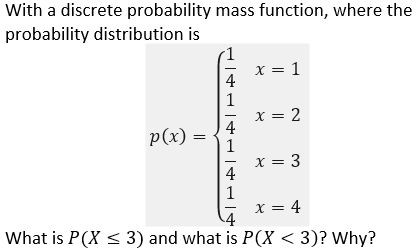
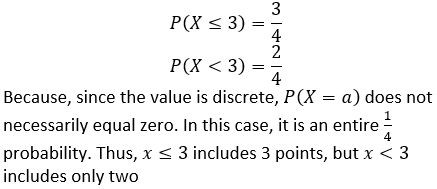
-
What is a joint probability distribution?
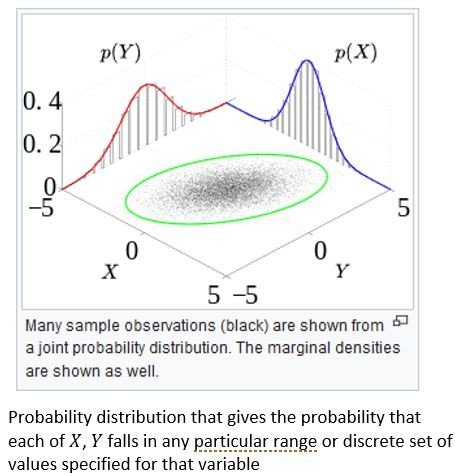
-

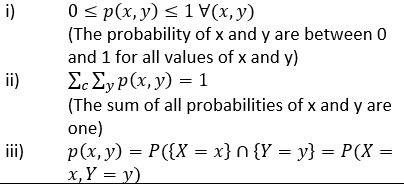
-
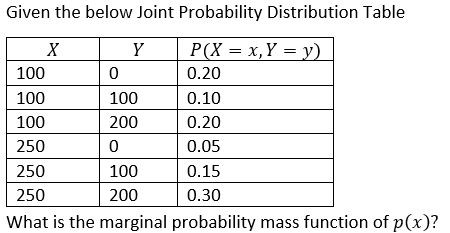

-

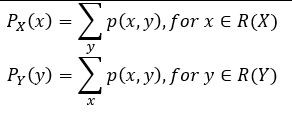
-
Symbol for “The set of possible values for X is 100 and 250”

-

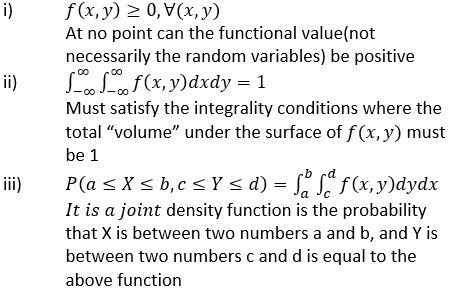
-
What is the formula for the marginal p.d.f.’s of X and Y that can be obtained from a joint density function?

-


-


-

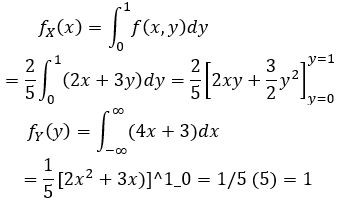
-


-
How do we determine the independence of two random variables, X and Y?

-
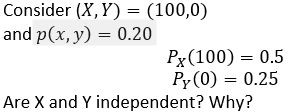

-

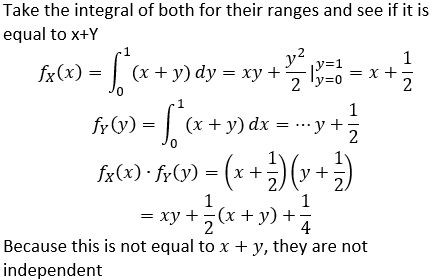
-


-
What is the range of a random variable?The set of all possible values a random quantity could assume
-
Symbol for expected value of X

-
What is the formula for Discrete Mathematical Expectation?
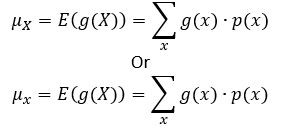
-
What is Bayes' Rule?
-
What is the formula for Continuous Mathematical Expectation?

-
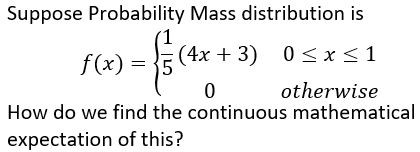

-
 Also a random variable (measurable essentially means “well-behaved”, predictable)
Also a random variable (measurable essentially means “well-behaved”, predictable) -


-


-

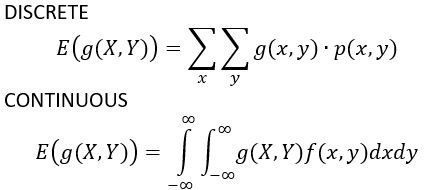
-
What does it mean that a random variable is a constant?

-
